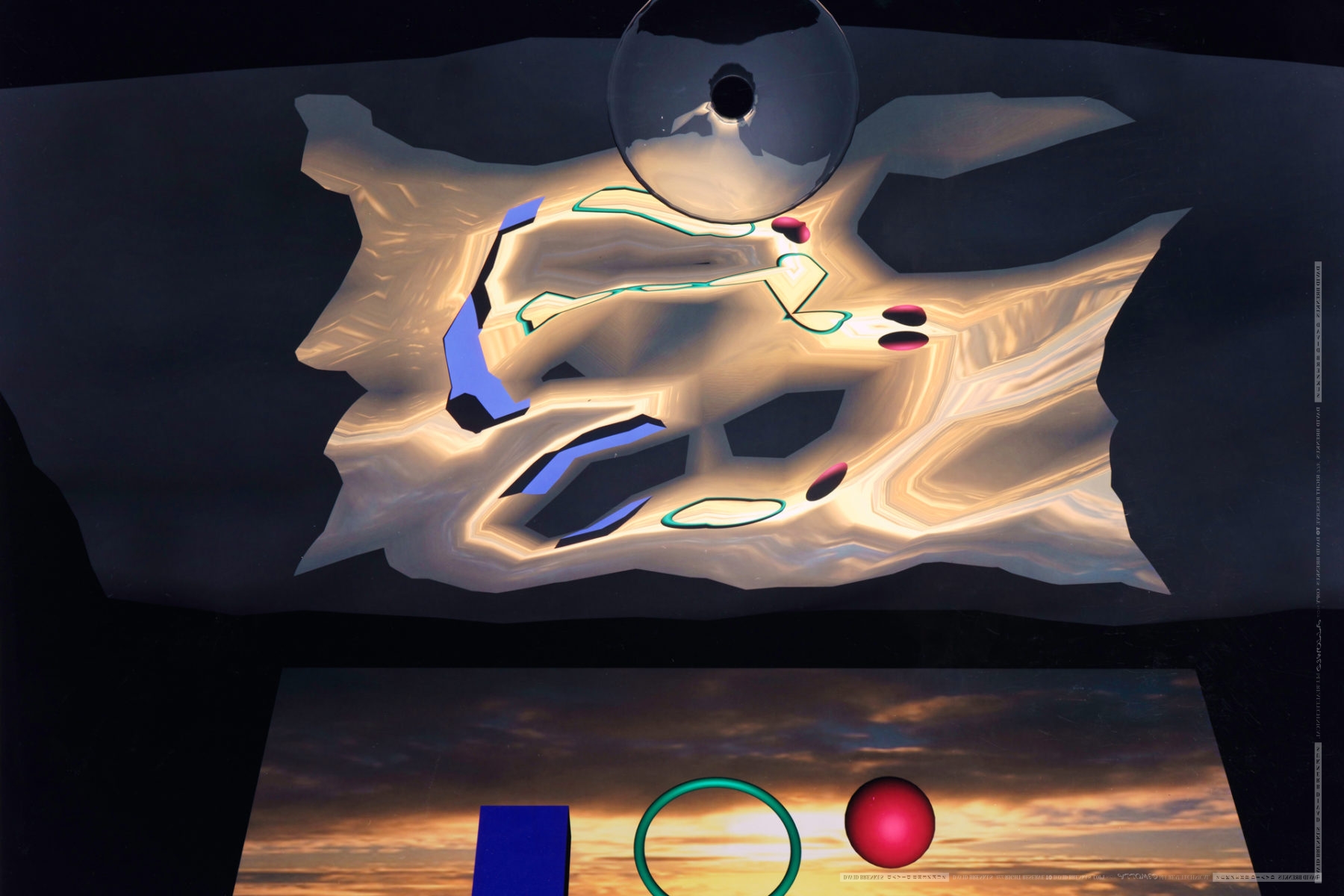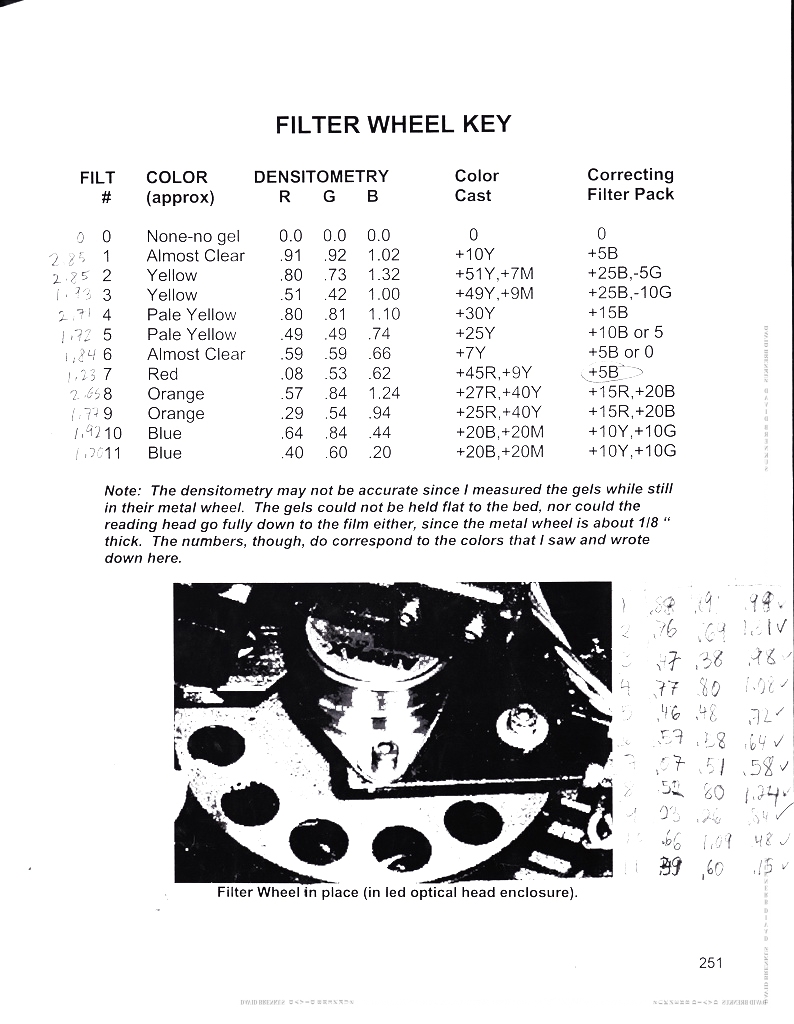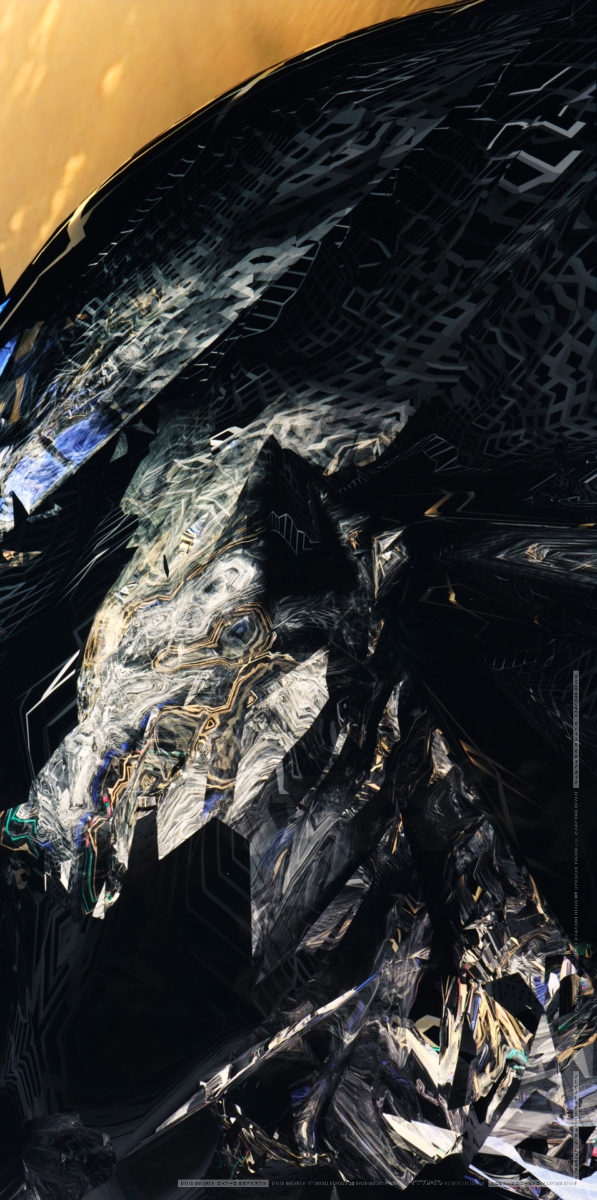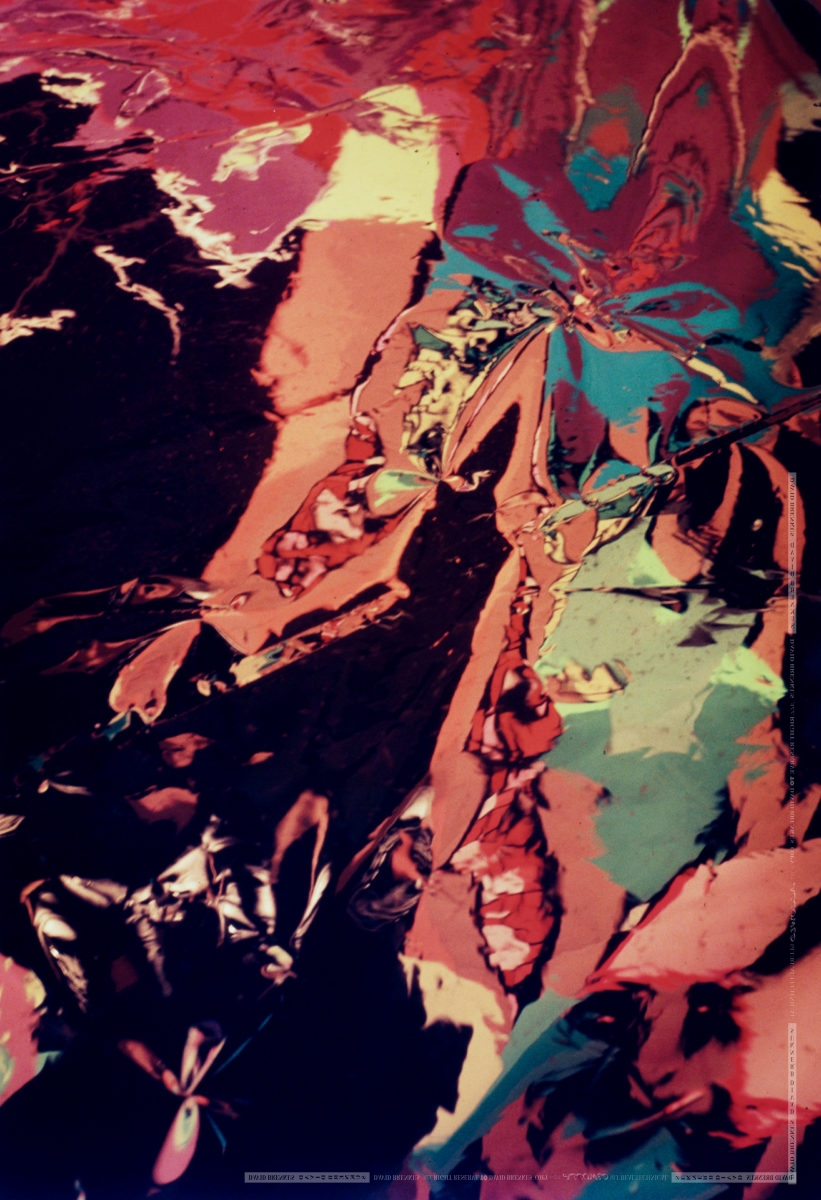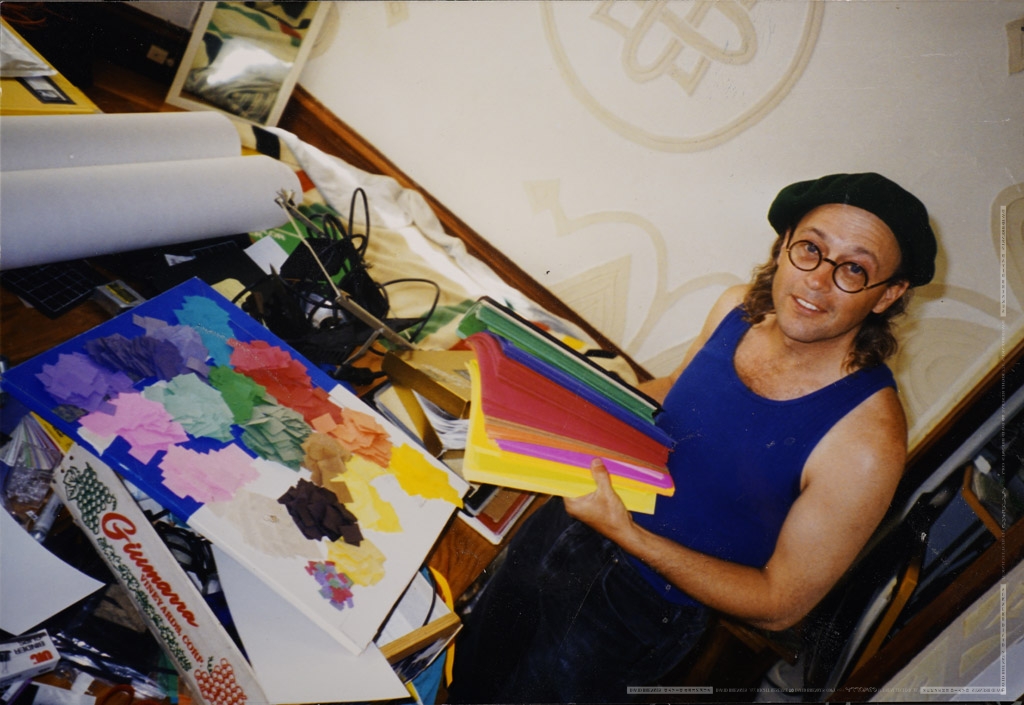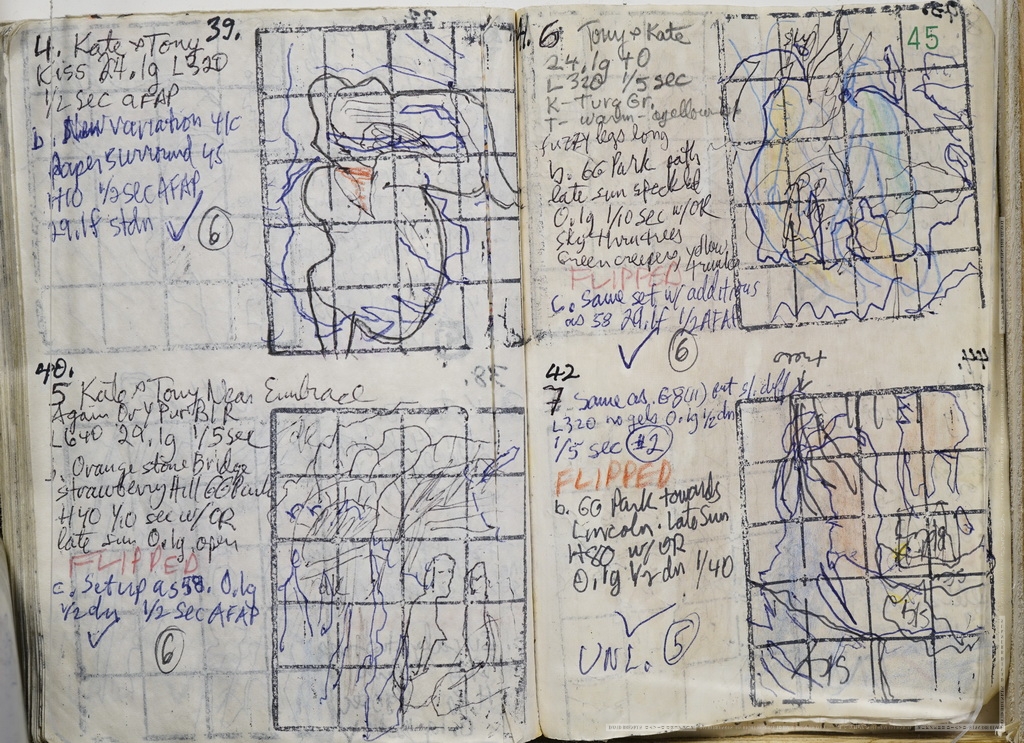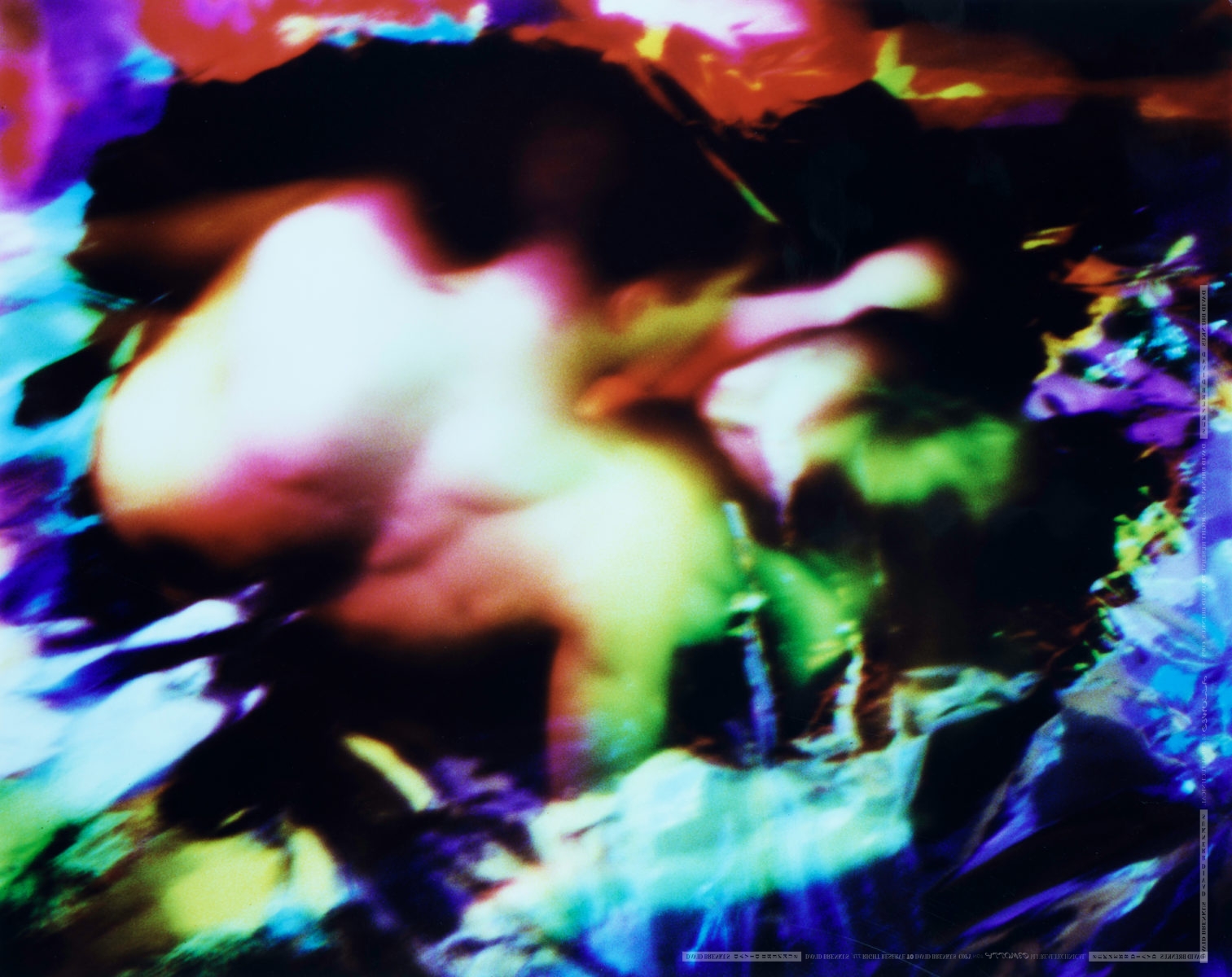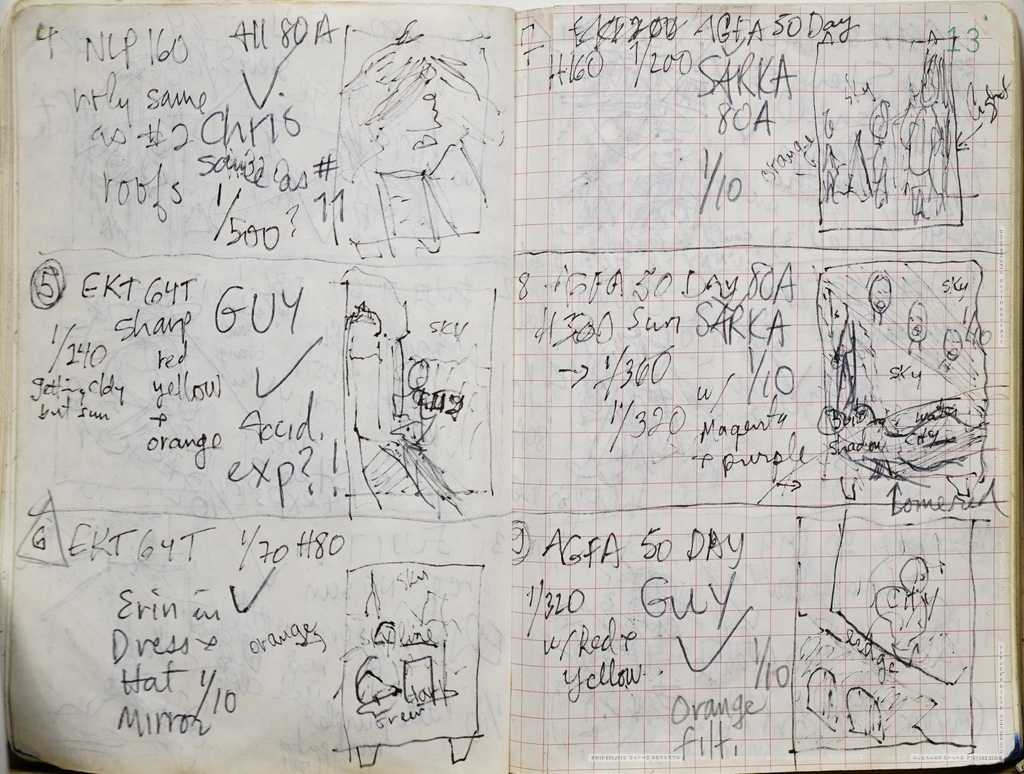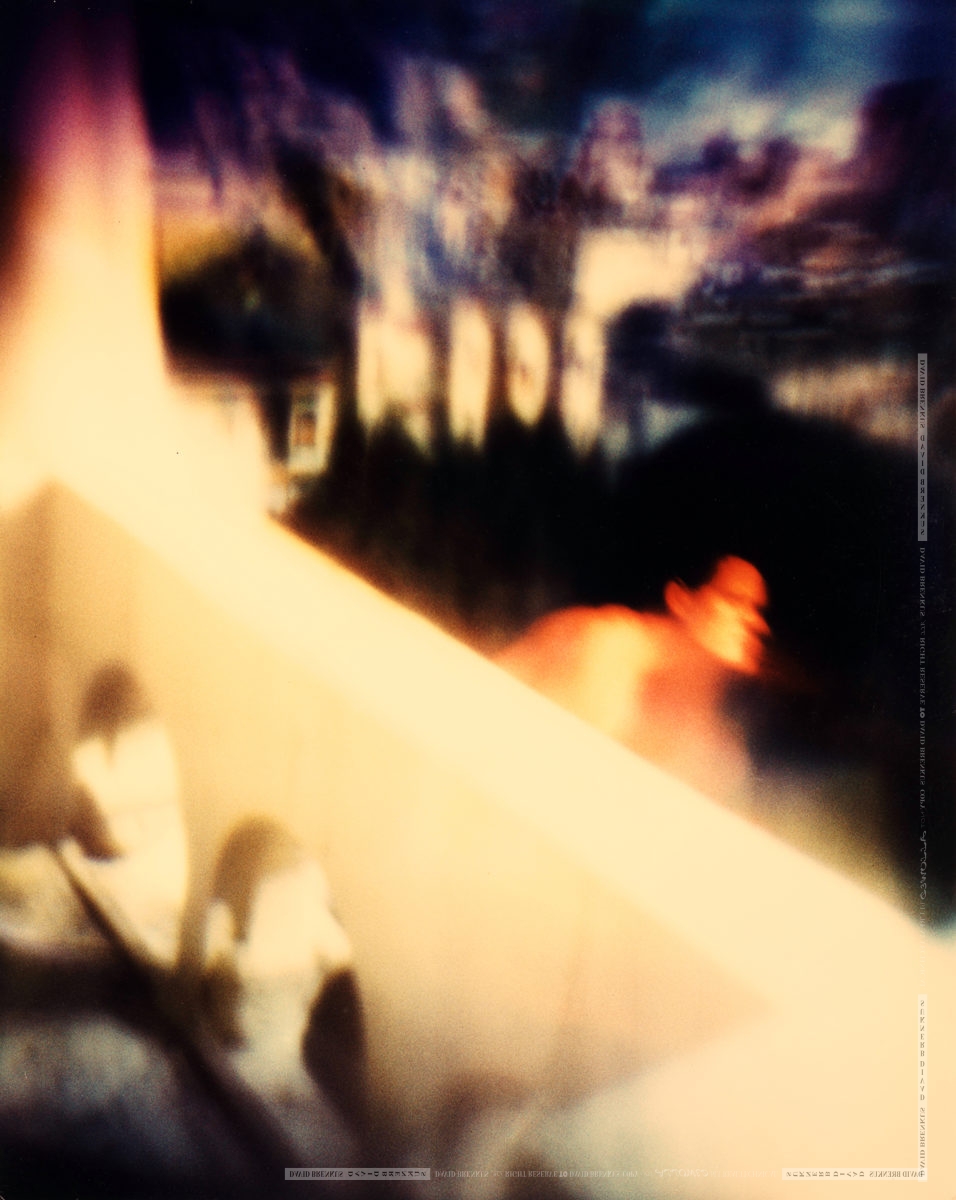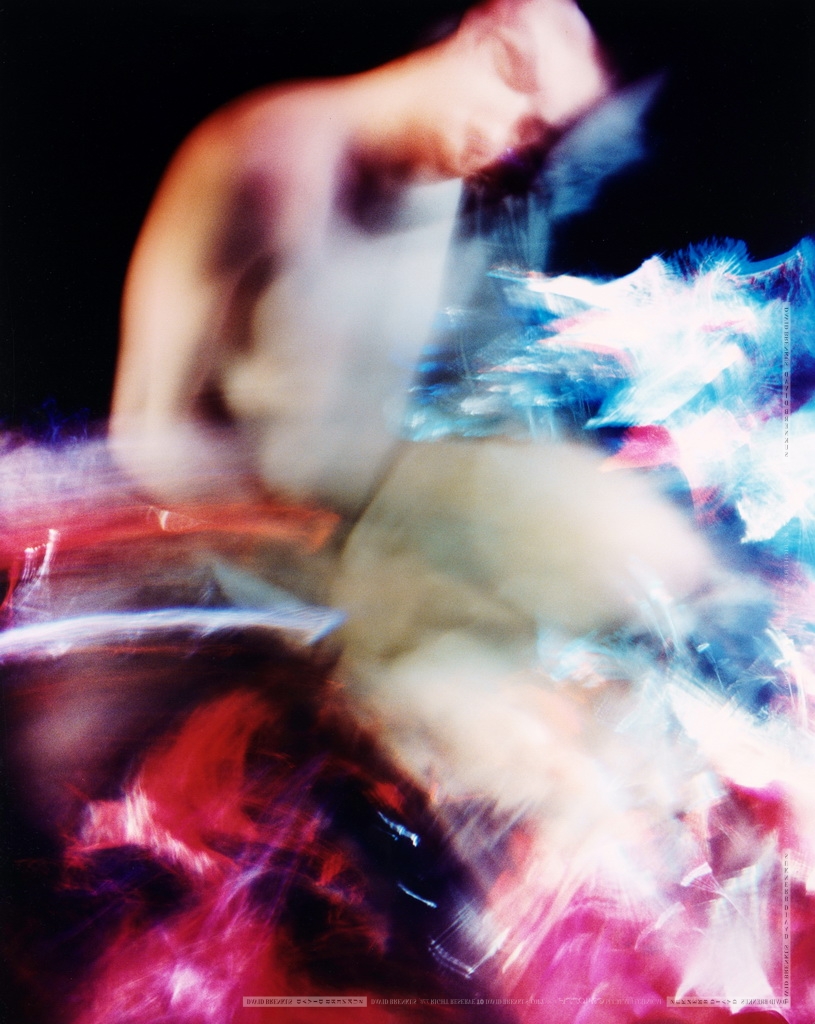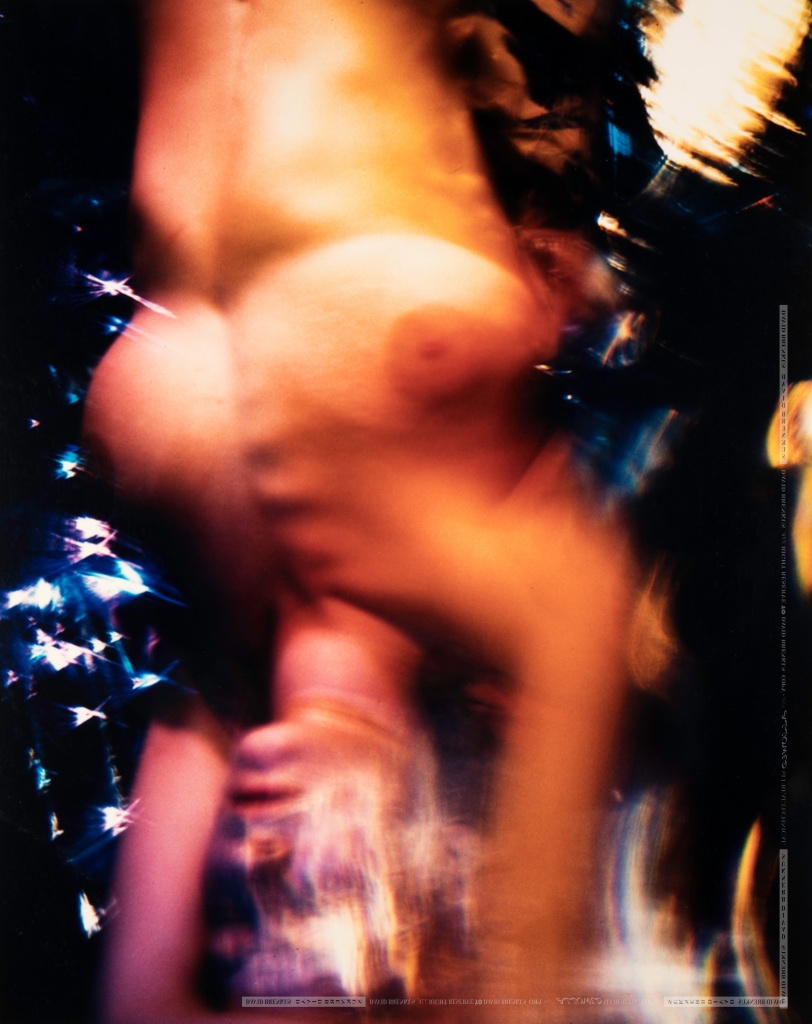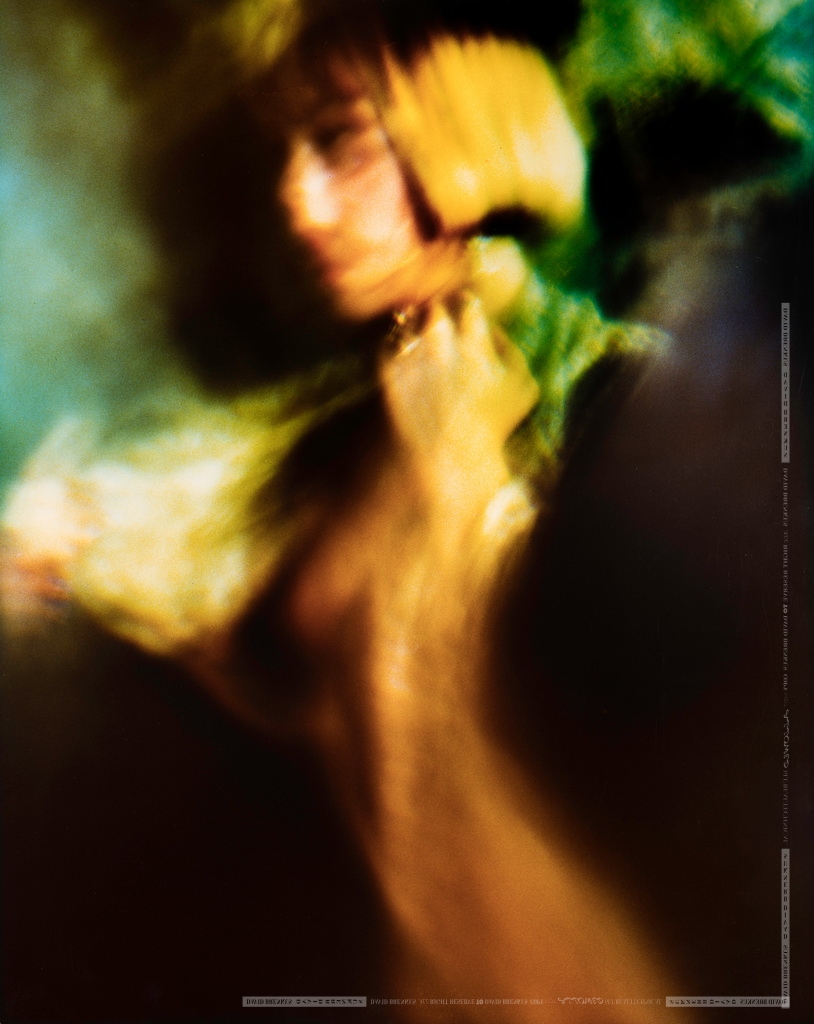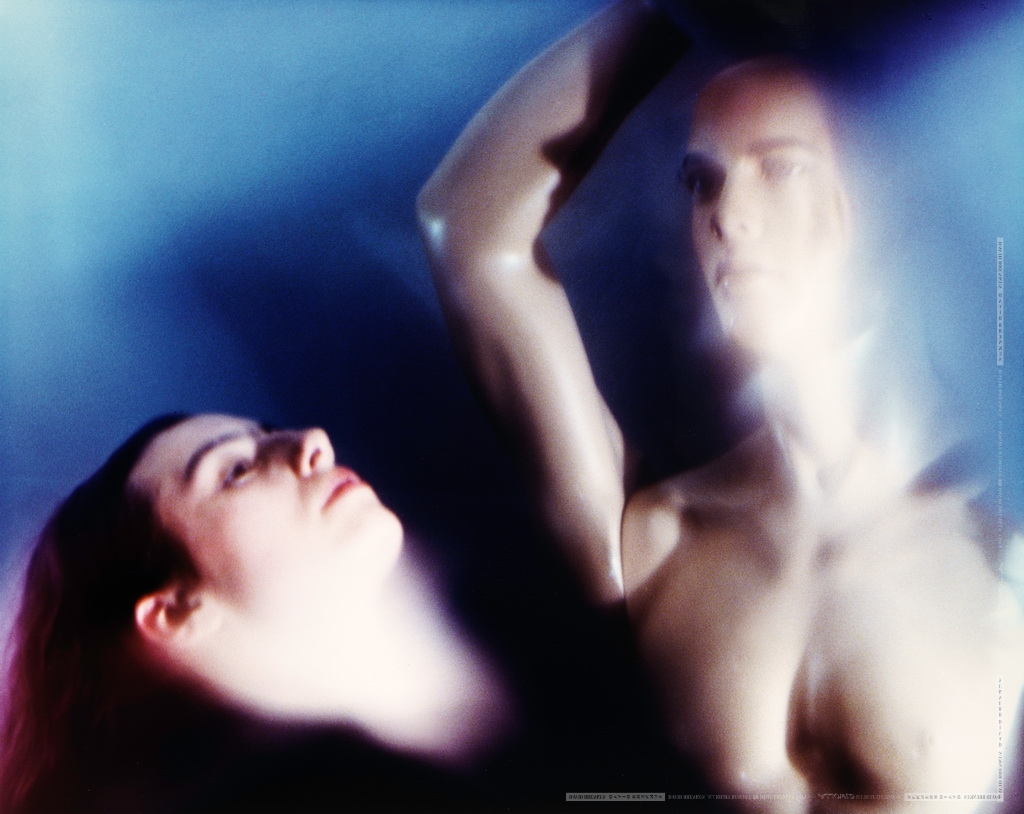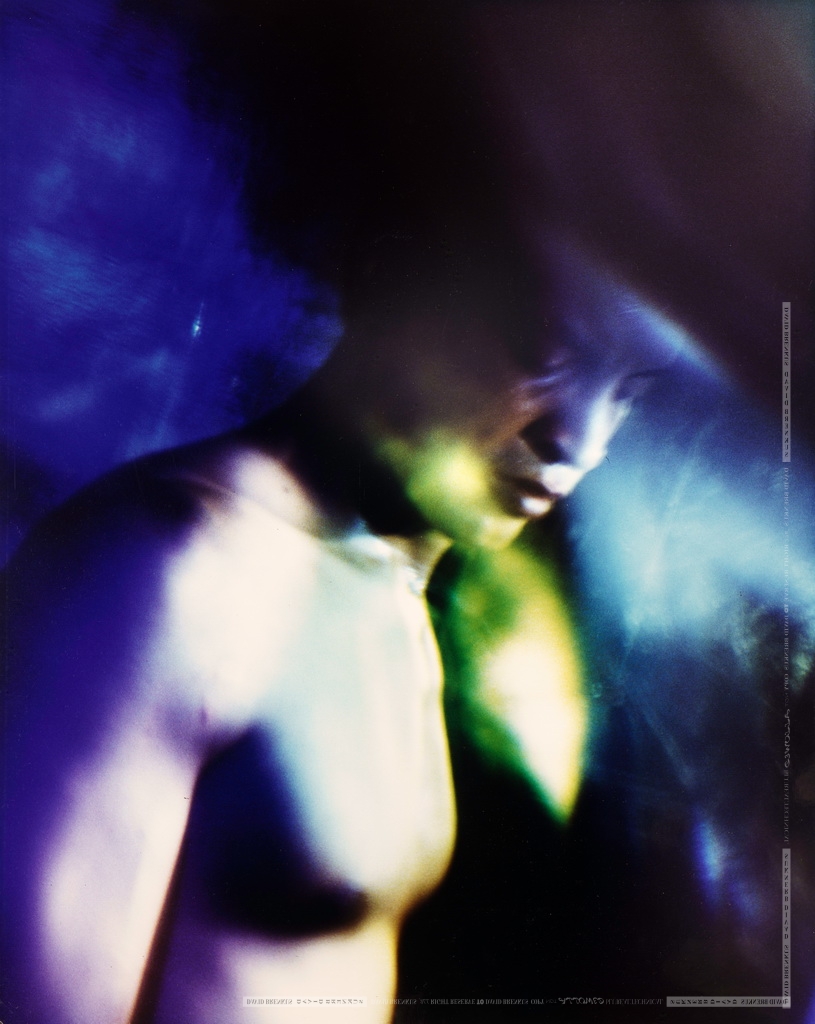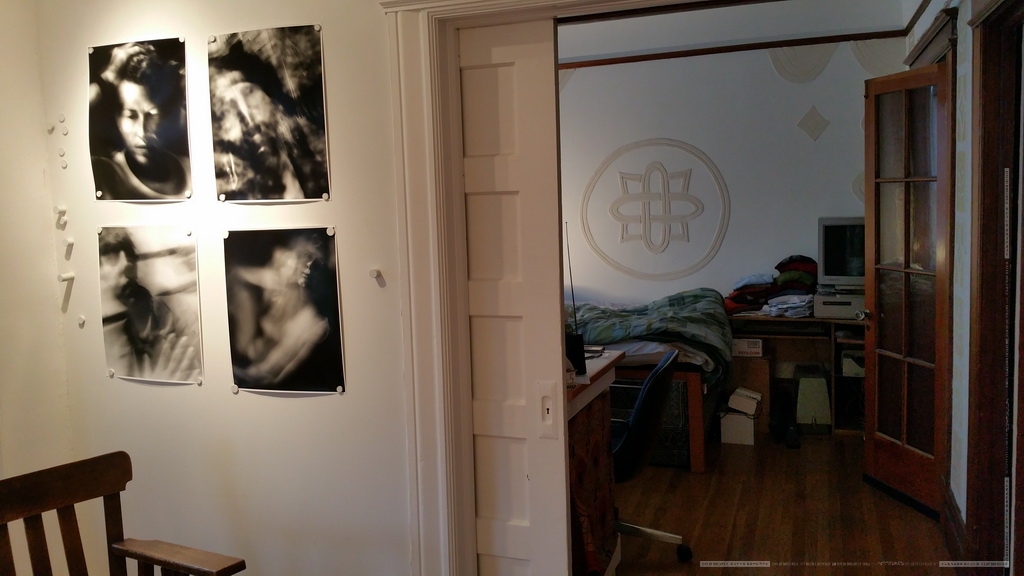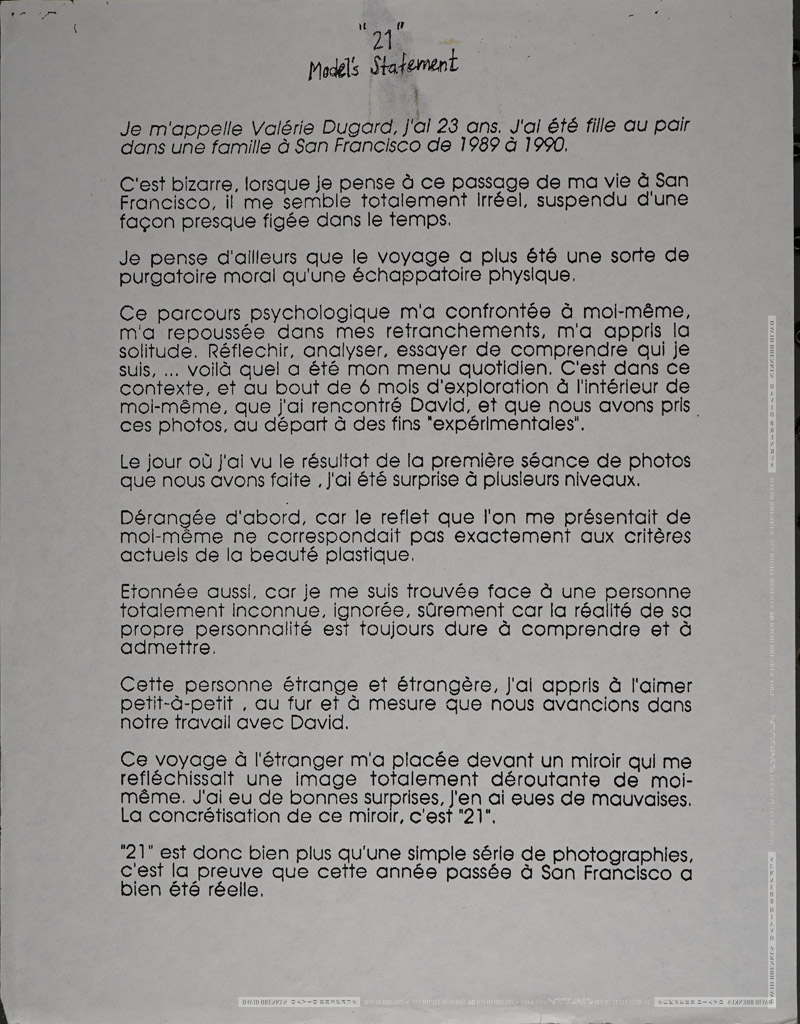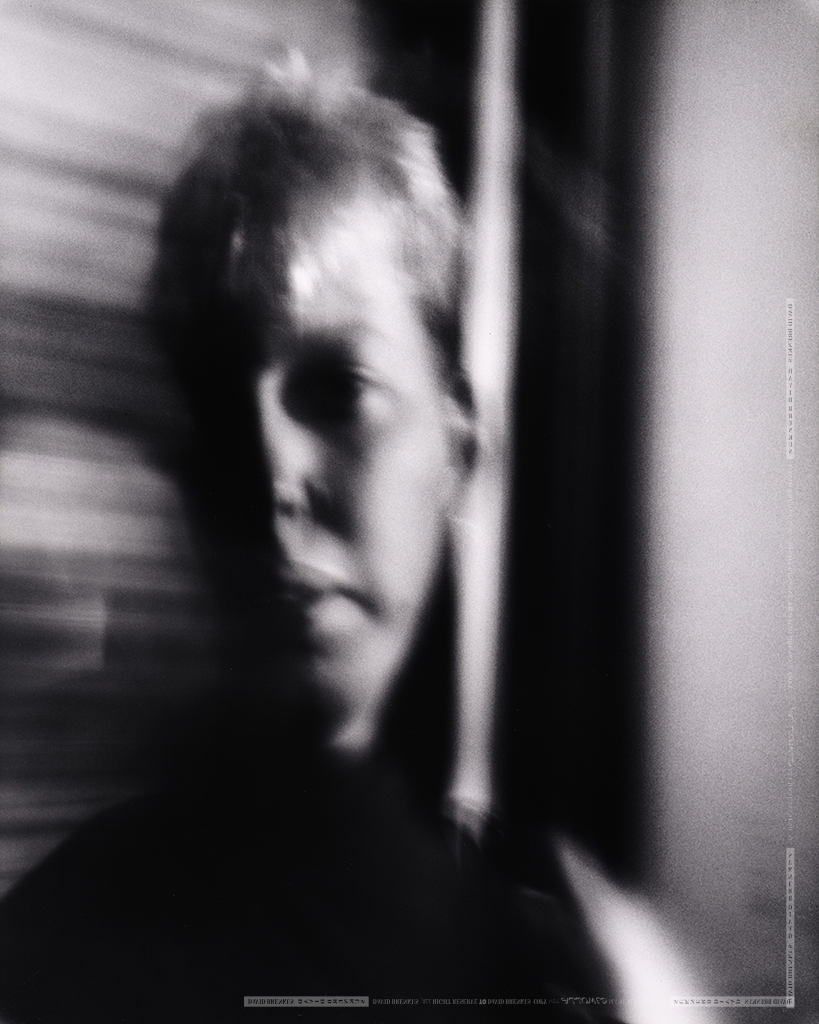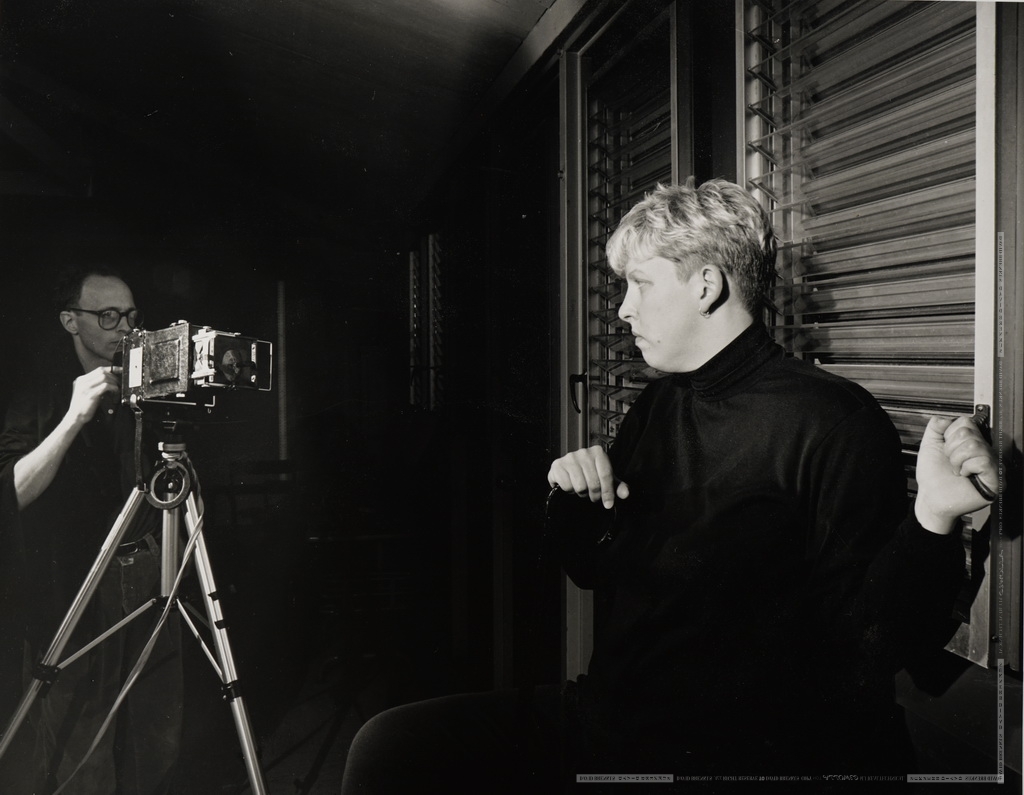MORE ABOUT WORK IN PROGRESS
Following the final closure of the color lab in 2009, I began another long experiment that I continue to work on today. I am not ready to show anything from this project yet as I have much work left to do. It is even more complicated and difficult than what I did with the Sunset series. My aim is to create a new kind of visual synthesizer which can be synced with music as well as providing my next body of high resolution still photographic art. I am fascinated by the similarities and differences of music and image composition.
MORE ABOUT SUNSET
Although I was overall pleased with the Blue Prince there were also a number of things that left me dissatisfied. Given the relative low level of light I could use, it was difficult to take a handheld shot using my shaky hands. By the time I could see this it was too late. You would have to actually use the mirror yourself to understand the impossibility of later trying to repeat a shot. A tiny whisper of air caused by walking around or opening the door to leave would move the mirror to take another shape and I had no way of even knowing the approximate positions I was in when I shot the pictures.
In the meantime I began to make a transition that would change my life. Everything that I had done in my artwork had been strictly analog so I had no need for a computer, though I was aware of the changes taking place. After all, I lived in San Francisco. My brother offered to buy me one a couple years earlier but I researched the subject and concluded that computers simply were too underpowered to deal with the high resolutions that I figured I needed. This began to change in 1998 when I calculated that it should at least be possible to work with such images using what was available. So I built my own dual processor 300 mhz computer and threw myself into learning computers. It also marked the beginning of a long period when I withdrew into solitude and for the most part stopped trying to exhibit my artwork.
My interest in computers was boundless and in the next 10 years I spent most of my time learning one part or another. I frequented computer recyclers, built and configured computers with every operating system I could get my hands on, learned how to troubleshoot, network computers and read lots of theoretical stuff on the web, which was beginning to explode at the time. My guiding passion was to gain a higher understanding of how computers work and what they mean for our way of living and working. It’s a long story so I will just come back to how it impacted my art.
Sunset1Setup 2000One of the many subjects that fascinated me was how Hollywood special effects were improving to the point where it became possible to create a virtual world. I found and tried out several 3D programs simply to satisfy my curiosity about how they worked. During one of these sessions, I wondered whether I could model what I had done in the basement using the Mylar mirror in 3D. It had occurred to me that I was constantly fighting gravity which caused the Mylar to only take certain shapes and not others. In a 3D model however I wouldn’t have this problem. So I decided to make a quick test of this possibility and it turned into the Sunset series.
I spent very little time on the 3D part of this whole project. It was after all a quick sort of test but it is still interesting to understand how the model and changes to it were handled by me and how it translated into the images that I am showing. I started by simply modeling my setup in the basement, with a virtual Mylar mirror and a virtual “wineglass” to please myself. The objects on the “ground” I kept extremely simple as befitted a quick experiment and I never moved them or altered them. There were 3 objects in all – a blue cube, a green torus and a red sphere – resting on a “floor” upon which was projected a low resolution image of a sunset – hence the name of the series. Therefore anytime you see red in the picture, it always originates with the red sphere you see in this foundational image. For me it was also an experiment in the minimal: how many different kinds of images could I generate from the same simple scene?
One uses a virtual camera in the program that can be moved anywhere in the 3D space to frame shots, but one can also create an animation by moving objects or camera at various points in time. I created a series of these short animations by moving the virtual camera around while changing the shape of the virtual Mylar reflector, which I doubled at one point to make it surround the scene, as well as also changing the shape and properties of the virtual wineglass which I often photographed “through”.
This project took the next 8 years of my life and was inextricably tangled up with learning about different aspects of computers. I went on many long detours and it was highly technical from start to finish. I found myself on the bleeding edge of technology as I wanted to print these pictures very large, but rendering an image took weeks because of the slow speed of computers then, even after I’d added more to create a “render farm” and was only getting a quarter of the resolution that I wanted to.
This was a filter wheel guide I made to record filters for the LVT for different film types.The most profound series of detours was caused one key decision I made early on which was an artistic one. I’d researched digital printing and was unhappy with what I was seeing in comparison to my analog print process. At the same time, I liked the idea of presenting something computer generated as a photograph, printed from a negative. In my expanding and changing view of what photography is and my previous artwork, this seemed entirely appropriate but it made the project far more difficult.
Kodak LVT Saturn 1010 Film RecorderIt was curious to me that one heard a lot of how you could scan a print in order to get it into a computer but almost nothing about doing the opposite, taking a digital image and transferring it to photographic film. The machines that could do this existed and were called film recorders but were fantastically expensive. They were used in the main by the publishing industry to bridge the time before the whole print and layout process for magazines could be done on the computer. Photographers continued to shoot on film but increasingly the images were digitally retouched. Magazines though were still doing their layout from analog photos, so the recorders were used to get 8×10 slides shot of the final image. One person I knew referred them to money printing machines, the trade was so lucrative.
It took years until these machines became finally obsolete and after a long process of researching the subject I finally purchased my own Kodak LVT – the Cadillac of film recorders – for $500 in 2004. This machine (circa 1990), nearly the size of a refrigerator and about as heavy, had retailed for $125,000. I spent the next several years learning how to use it in a long project all its own that was part computer archaeology. My task was complicated by the fact that my recorder was an older model driven by a very old “vax” computer – a DEC Alpha in fact – running the VMS operating system. I ultimately reconstructed a large part of the corporate directory that had been long since dissolved and contacted and befriended some of the former employees because there was next to nothing about these machines on the internet. I learned the most from one very kind former employee who became a close friend and mentor over the course of a year. I learned from another how to repair my machine when it stopped working and much more.
51-Wire-Mir2-301j0019-100T-1K 2000-08Along the way I went on a related but distinct detour that caused me to teach myself to program which again changed my life. This sub-project was entirely based on finding a way to improve the calibration of the machine beyond what Kodak had done. Even though the recorder used the more stable and new for the time LED lights to make the exposure, the negatives I made didn’t print like my old ones. They were finicky and had almost no color latitude. The great thing about my earlier color was I could experiment to find the color that pleased me. The chemical processes I used caused the colors to separate so shifting the filtration in printing altered a lot and sometimes gave you other interesting choices. So I began to program and do test after expensive test, shooting 8×10 grayscales, measuring them with a variety of devices I acquired, and altering my calibration program as I went along. I was working on several new and promising ideas when the project was terminated prematurely for me in 2008 with the arrival of the Global Financial Crisis. One effect of the crisis was the color lab I had worked with for years suddenly went bankrupt and closed their doors. I had spent years working with them and thousands of dollars on film and processing but the page had turned.
Luckily for me, I spent a considerable amount of time shooting out film with the machine as I tested and improved my process and printed the results. I used 8×10 film exclusively, but I experimented with even more film stocks and chemical processes than I had done before. I had improved the process enough for me to generate finished prints for many images from several film stocks and the altered processes.
This project was very different from what I did before in that it took years to accomplish. Happily it turned out to interest me even more than what I had done before, not only the process of it which kept me engaged and taught me a lot but the result. Of all my photos, today I am most fascinated by them.
MORE ABOUT THE BLUE PRINCE
The Blue Prince #25 – Animal Intelligence 1997 Me with colored paper palette in 1997While working with the Mylar mirror I grew frustrated with my wineglass lenses. Since I had a different kind of deforming lens to work with using the mirror, I felt the blurring caused by the wineglasses was just getting in my way. At the same time it was difficult to move my 4×5 camera with its heavy tripod and improvised setup with extra light stands, especially in tiny increments, which was necessary as each tiny movement presented a radically different view.
When I looked at the mirror using my eyes I was spellbound, so on a whim, I loaded some color slide film into my 35mm camera and began to shoot with that. I then made 4×5 internegatives from the slides and printed them. I have separated these shots out as they were taken with a different kind of camera, but something else happened too. As I looked at the prints I found myself ordering them again and ended up with one big series of 36 images I called the Blue Prince.
Happily I found a photo which shows me with my color palette for the Blue Prince. Some of my favorite photos were the first ones I took. During those I used colored construction paper instead of colored cloths to serve as the subject. I threw down the small squares and full sheets and began shooting the 35mm slides. Animal Intelligence (above), Fates, Contemplation, and A Little Bird Told Me were all taken this way, as were some of the Mylar Abstracts group.
MORE ABOUT MYLAR ABSTRACTS
Shot of Mylar mirror on its frame. I shot some of Mylar Abstracts and the Blue Prince using itBy 1997 I was growing tired of searching for models and I’d begun to make my first pure abstractions. In the process without realizing it I turned the page on using models and nudes in my work. This group began in my living room but I’d grown frustrated trying to make unsupported sheets of Mylar take anything other than a semi random shape. I had in the previous couple years spent a lot of time renovating the basement to make a studio and gallery there and it was a clean and much larger place to work so I moved my project down there for the first time. I built a huge wooden frame and joined two sheets of Mylar together to make one big shapeable mirror that I could raise or lower with ropes. You can see me demonstrating it a bit in the video on my home page. I placed it at a 45 degree angle and used masking tape to create stretches and deformations in the Mylar mirror while placing random, colored cloths or objects at hand on the floor as “content”. I then set up my wineglass camera to shoot into the Mylar so that I caught the reflection of the objects on the floor in my shot.
I found that using the Mylar on the frame was strangely a little different. Instead of seeing the effects as brush strokes it became more as if I was using a different type of lens, but a very wacky one that seemed to reveal hidden worlds to me at the same time. A normal lens focuses the light falling on a scene so that there is a one to one correspondence between what you get in the photo and what you have before you. The Mylar mirror also collects light but it has its own logic dictated by its shape. Metaphorically speaking it seemed to me to focus on a more complex version of reality which you get if you combine all that surrounds you and don’t just restrict your perception to what is just in front of your nose. Here is the one process shot I have of the setup taken with a 35mm camera. Sadly my hand shook a bit during the shot but it shows how the mirror looked in action.
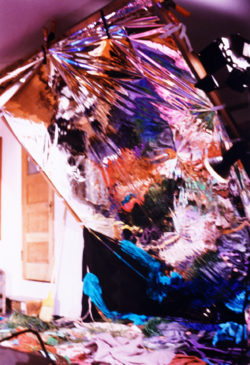
MORE ABOUT MULTI EXPOSURE MYLAR
The Lover’s Observed 1997This group of 4×5 color photos was taken more or less at the same time as the previous one, but instead of layering outdoor environments upon the nudes I’d shot, I continued to use and experiment with Mylar and exposed that instead. Sometimes I combined both as I was moving in all directions at the same time, but the category is useful for me because the overall look and feel is different. One of my favorite shots became The Lover’s Observed. I began working with couples, in this case Kate and Tony who kindly agreed to model. I was surprised at the result, which was what I always hoped for.
Here is my shot book page that includes my notes for that picture in the top left corner. As you can see in this case I began with the models but often it was the opposite: I made Mylar exposures and later exposed the models, who I shot against and upon a black cloth background. In my notes I often used color pencil to remind myself of the dominant colors in the photo, but sometimes I didn’t have the time to do so or it was just too difficult as when the wind was blowing outdoors.
Shot_Book_9_132 (1997)I liked the freedom to shape the Mylar exposure separately. When I had models lie down on Mylar and was only making a single exposure, my primary concern in focusing and deforming the image was the person, so whatever happened to the Mylar part of the image just happened. With these photos I began to peer into the Mylar as if it was a separate world because I could concentrate on it alone. I began to invent stories for myself from the shapes I was seeing and decided to capture.
These experiments were important to me, not only because I liked what came out , but because certain ones convinced me that it is indeed possible to paint with an analog photograph. The Mylar exposures provided something I could shape and use to add ideas, as well as the color that you would expect to be able to control with a painting. Of course, it is not the same. With a photograph you always come back to the light you capture in a particular moment, or group of them.
MORE ABOUT MULTI EXPOSURE NON MYLAR
Gargoyle 1993As I saw how seamlessly the Mylar reflections blended with the color nudes, my notions of what made a photo began a rapid expansion that resulted in me experimenting with many things simultaneously. You will see that I have ordered my bodies of work, but some are also groups linked to a certain general technique. I did this later in hindsight for my own convenience. Before 1993 my “projects” were chronological and sequential. From 1993 until 1997 this changed. It was an especially wild and fertile time for me. I was really trying consciously to find ways to paint using analog photography so I wanted to try out everything I could put my hands on.
The way I saw it was there was no real fundamental difference between a painting and a photograph as they are both pictures. When we see Van Gogh’s starry night, we know he had to make many brush strokes and took time to complete it, but in the end we see a picture. We perceive it as a sort of captured moment for him, though one in which the style is so expressive that it’s hard not to feel something. I saw no reason why photography couldn’t do the same – after all in a sense it grew out of and from painting. It seemed to me, that I would gain the most if I freed myself from thinking of a photograph as a moment captured by one exposure and looked upon it as a process that gives you a picture.
Multiple exposure was nothing new to photography but I thought of a way to do it differently and began experimenting. The thing that frustrated me when I made my first double exposures with a 35mm camera was how uncontrollable the process was. The second exposure could completely overwrite the first and it was impractical to return to add another exposure much later because the film was on a roll and the film winder wasn’t designed to rewind the film in registration – I tried and found it difficult. When you are lucky and it works though, the result can be mesmerizing. But by then I had worked with 4×5 sheet film for all my artwork for a few years, so I knew all I had to do was to take better records of what I’d shot on each sheet and with the addition of a simple mask, I could begin to intentionally place exposures upon the film, to layer the film with light exposures. With computers later this would have been trivial, but to do it analog it was not.
Shot_Book_8_025 (1993)I never needed to improve the simple expedient I began with, which was to hang a small piece of black cloth in front of the wineglass lenses, from which I cut a small hole a bit smaller than an egg. I found I could increase or restrict the space on the film exposed by moving the cloth towards or away from the camera and control its placement by moving the cloth up, down, left or right.
My record keeping changed and improved as I began layering the film more. Here is a page from my shot book near the beginning of the process. You can see the crude drawing I made when I made the two exposures that made up the image I called Gargoyle (center left).
This body of work was ultimately a result of my desire to get out of the “studio” and make exposures outdoors. In the picture with Guy that I call Gargoyle, I got permission and carted my camera to a tower of a tall church in North Beach for the background. I thought if I could meld the photographic and symbolic it would be interesting to see the result.
The funny thing about making analog multiple exposures, even the way I did it is, it is both frustrating and satisfying because you really only have one shot at it working, just as with a simple photograph. The fact that I was experimenting with so many things did not make my odds go up at getting a good, balanced exposure. The miracle for me is how many pictures did turn out.
MORE ABOUT MYLAR NUDES
The reflective material that worked best for me was Mylar. It is plastic but is mirror-like, often used for children’s balloons. I had scraps of it I’d used a few times but I’d also found a roll of it years before on the streets of SF and started using it more in 1993. I saw how well it created reflections but also shapes and textures, almost like brush strokes that evoked wind, water, and strange places never seen. It was almost as if the Mylar was painting for me, but the color was photographic. For example, in color photography it’s relatively easy to get a magenta/green opposition, while you will almost never see this in a painting. When you have something like this embedded in the negative you can’t really get around it. At the same time, with the process I was using, I was intentionally creating this. The photo SteveMagenta is an example. I used a magenta gel on one of the lights, but even given its glaring color I liked it – which taught me something.
SteveMagenta 1993For this group of photos I had the models lay down on Mylar or I arranged it myself in some other way. I made two series doing this which I like: Mother Earth and Water Mandala. As I didn’t do this long, the photos I shot depended on a handful of people, and a lot of the beauty that I see in these pictures comes from them. Between the new colors and shapes I saw in these photos I felt I was finding my own personal visual language.
Mother Earth #2 1993 – I wanted to make this image swing as if on a pendulum every so oftenThe funny thing is that with both series, I wanted to move some of the images when they were on the wall. I thought of making motors to do it but never did. One reason behind this urge was I could see abstraction beginning to creep into the shots I took and chose to print, and this caused me to begin questioning the necessity of having one “final” orientation of the picture. Another was some pictures seemed to ask for it. Mother Earth #2 is an example. I flipped the photo from the way I shot it as a sort of metaphor for how we are abusing our mother planet. The thought came to me that I could make the picture swing just a bit like a pendulum every so often.
MORE ABOUT SINGLE EXP COLOR
Daniel #3 1992 Mannequin 1991I really couldn’t wait to work with color film so the next thing I did was to see if what I had done with black and white could be transferred to color. I started over just making test shots outdoors or indoors and when my confidence improved in what I was doing, I continued to work with people posing nude. I shot full frame photographs on 4×5 film as before, but using color changed the process and whole experience for me. I tried out a lot of stuff both technically and thematically.
When I used standard negative film it was uninteresting to me, so I started experimenting and found a way chemically to get the color I wanted while trying to take different kinds of photos. I shot instead on 4×5 color slide films and processed them into negatives, but they were stranger, with a wilder color that suited me. In the process I fell in love with color.
I also began working more with lighting and started using colored gels to try to paint colors on the people I shot in my living room. An example of the latter is the nudes I took of Daniel. The final color you see was a combination of factors: my broken glass lenses, the lighting, film and chemical process and printing decisions I made. This became more true with time.
Grace Lace 1991I began using various materials as reflectors or as backgrounds, and this led me into a choice that lasted years. At one point, I had one wall completely gilded and another painted with aluminum. Mannequin is one of the photos I took in front of the aluminum wall. GraceLace is an example shot in front of the gold wall.
The switch to color also changed how I printed. For Black and White, after a short stint at the CCSF group lab, I was able to do everything in my own darkroom. For reasons of economy, I tested out an image by first printing it 8×10 and then at 11×14, before making the final toned prints at 16×20. Even then it seemed that the larger I printed them the better they looked to me.
Color printing at home was totally impractical so I took a color printing class which allowed me to use the group lab to print outside of class. In time I began making what they called “mural” prints of the most promising images – 30×40 inches in size – and 16×20 became the size I did the initial tests with. The impact of the larger size blew me away and it became my standard practice to print the images I liked best at both sizes.
MORE ABOUT NUDES
In 1990 I switched to shooting nudes for my next set of tests. The Nude as a category of art carried a lot of baggage for me, but I knew I wanted to see if I could do it differently and that it would be an exciting challenge. The bottom line for me was the person you photograph is literally bare so it is a perfect metaphor to express the personal, the deep and universal. A photograph instead of being an instant of time could be made to speak a symbolic language.
It was a stereotype for me, a male photographer asking a woman to model in the nude – and especially someone he approaches in a bar! I had no funds to hire models but frankly it didn’t seem the way to go if I could. I didn’t want to photograph and work with models in the sense of mannequins I could shape to my will like a doll or robot. I wanted to capture reality, not a constructed one, but a different one, which I called the Blurreal. I decided from the beginning to alternate between shooting men and women, to keep myself honest and focused on the overall project, and also to always include the person’s face in the picture. I wanted to subjectify rather than objectify.
I think these simple decisions helped me a lot. I began asking friends if they would model for me and to my delight many agreed. I looked on each session as a collaboration and told them so. As I look back today I see everything I did then that turned out well depended on friends – those I had and those I made by asking them to model for me.
MikePretzel 1990I have no process shots of what I did. There were no cell phone cameras in those days. In any event I didn’t want to intrude on the private space we had as we worked, which taking extra shots using a normal sharp camera might have destroyed. But even if that wasn’t the case I had my hands completely full. I was experimenting more or less constantly and trying to evolve the craft of it as I went along. I sweated each session through.
I shot everything in my living room. My apartment like many in SF had sliding doors, so even though the living room is not especially deep, I could open the door to my bedroom and if the camera optics required it, move my camera further back to focus. Sometimes I hung black cloths on my walls and floor, but basically I set up the hot lights and improvised. It was also cozy with a handmade window seat in front of bay windows, wood floors, a couple gold and silver walls and African mud reliefs on other walls. Walter Street was a special place and it was a special place to work, and I think, people who came there sensed that.
View of my living room to my bedroom 2014. The wall with the photos was gold leafed in the 80sSome good series emerged out of these sessions but the most important to me was 21. Valerie was the counter example, not a close friend but a pretty woman I met and asked to model but what happened I think astonished us both.
Each session I shot 12 or so shots and afterwards, developed and printed them in the darkroom I’d made in the laundry room of my apartment. After the first session we were both surprised by what we saw and mutually agreed to try again. This pattern repeated 6 times until it was done. I printed 21 of them for exhibition at the size I wanted – 16×20 inches. At the exhibition I hung both my artist’s statement and one by Valerie.
Today I look at the pictures I didn’t select and wonder, because so many are interesting to me, what happened?
Because I took so many pictures of Valerie, it made what I was doing more apparent to me. The basic form of her face and body were there, just as in any photograph, but the fact that it wasn’t fixed or recognizably “her” didn’t matter – “she” was still there. I felt I was capturing something else, an inner state or hidden selves – almost a different plane of reality. I called what I was doing Blurrealism because I didn’t feel there was a word to describe it. Each of us perceives our own reality, and these individual realities change over time, overlap and blur into those experienced by others. So much of life is hidden from us, a mystery but we should try to see beyond the surface. I think that looking at life and others sympathetically helps.
Val Hands Sharp 1990MORE ABOUT PORTRAITS
Although my initial result was good, the reality was I didn’t know what I was doing in technical terms, so had to do a lot of tests as well as educate myself about photography as I went along. This went on for years. My instinctive approach was to try as much as possible to make finished art during these tests, not to shoot and print mannequin heads. My first project, or set of tests, was to make portraits, something familiar to everyone but one that is also a kind of category of art. This imposed a structure on my tests while giving me wide latitude to experiment with light, film types, chemistry, and of course the wineglass optics most of all. So I began to experiment both with the techniques and artistically at the same time.
I carried my gear and to the bars and cafes of San Francisco and made portraits both indoors and outdoors. I also shot many in my living room using the movie lights I had acquired in a fire sale earlier. I have very few photos of myself working or that show the process. Luckily, I was invited to demonstrate my camera for a photo class at CCSF and the teacher took a shot of me working with one of the other students as a model.
Here is the picture Janice G. took of me working with Maggie, a fellow student:
Me photographed shooting Maggie at CCSF class by Janice G. 1989Here is the shot that came out of it:
MaggiePoleBlinds 1989As I shot, developed and printed these images I almost felt that I had stumbled into another dimension. I started assembling small series within the groups.

